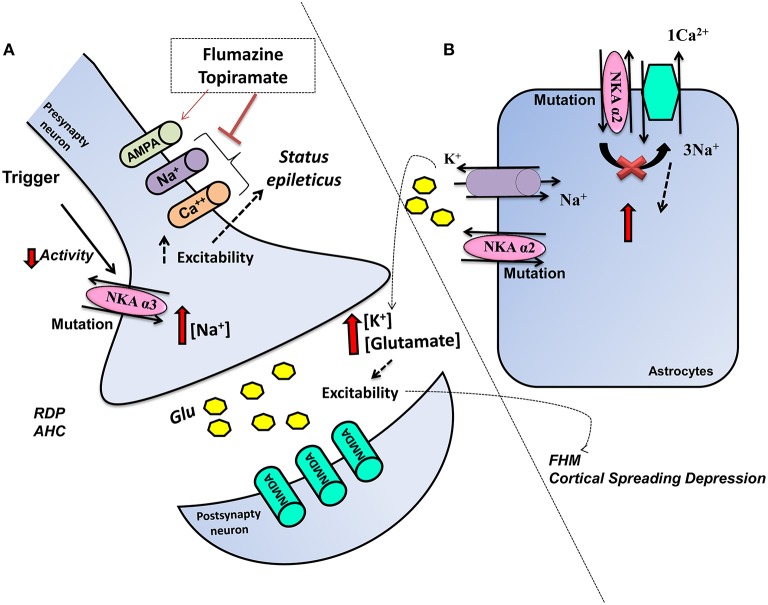Figure 1.
Schematic representation of the influence of ATP1A2 mutations in glia and ATP1A3 mutations in neurons on glutamatergic system activity. Mutations cause a dysfunctional NKA activity, (A) ATP1A3 mutation in neurons decreases the NKA activity and increases intracellular Na+, which increases the cellular excitability, thereby affecting neuronal functions. Flumarazine and topiramate could be used as treatment in some cases. (B) ATP1A2 in astrocytes results in change of metabolism, more K+, and glutamate in the extracellular space and rendering the CNS more vulnerable to migraine, seizures, and neurodegenerative process.

